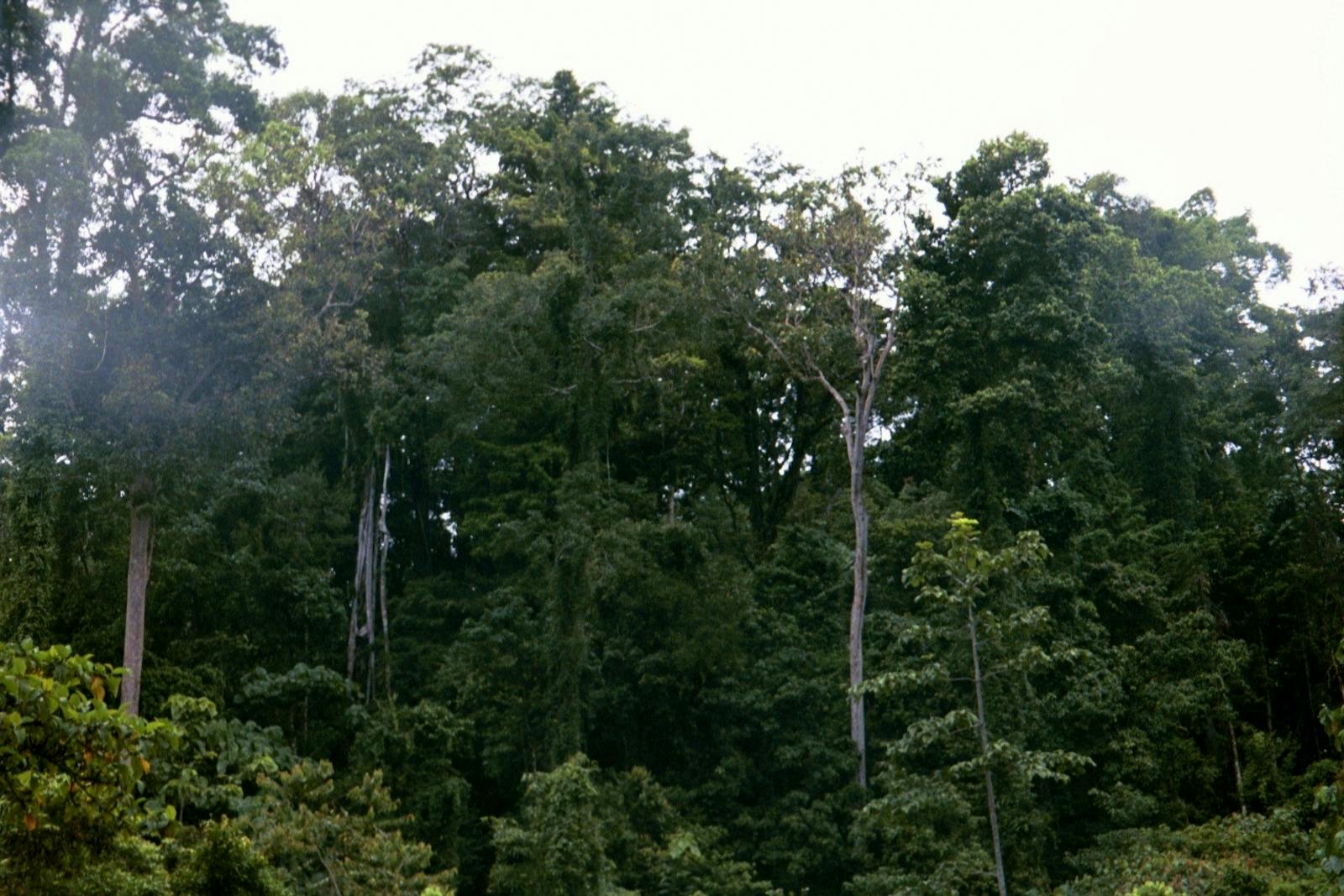Biak-Numfoor Rainforests
The ecoregion’s land area is provided in units of 1,000 hectares. The conservation target is the Global Safety Net (GSN1) area for the given ecoregion. The protection level indicates the percentage of the GSN goal that is currently protected on a scale of 0-10. N/A means data is not available at this time.
Bioregion: New Guinea & Surrounding Islands (AU13)
Realm: Australasia
Ecoregion Size (1000 ha):
283
Ecoregion ID:
137
Conservation Target:
100%
Protection Level:
2
States: Indonesia
The Biak-Numfoor Rain Forests ecoregion covers Biak and Numfoor islands that stand guard at the entrance of Cenderawasih Bay—which means Bird of Paradise Bay in Indonesian—constricting the western part of Papua New Guinea to form Bird’s Head Peninsula. The islands harbor the most number of endemic birds of any single area in New Guinea. The 12 species are: Geelvink scrubfowl, Geelvink pygmy-parrot, black-winged lory, Biak coucal, Biak paradise-kingfisher, Numfoor paradise-kingfisher, Biak gerygone, Biak monarch, Biak flycatcher, long-tailed starling, Biak white-eye, and Biak scops owl.

The flagship species of the Biak-Numfoor Rainforests ecoregion is the Biak emerald monitor lizard. Image credit: Shutterstock, Rob Hainer (License)
The surface geology of these islands is mostly limestone, with an abruptly rising, rugged, mountainous terrain with large sinkholes and caves. Biak became the site of bloody fighting in the Pacific theater during World War II when Japanese forces established defensive strongholds inside these caves.
The climate is tropical, humid, and wet, creating conditions ideal for rainforests. Temperatures vary little through the day and year, averaging around 26°C. The average annual rainfall reaches about 1,080 millimeters, with most downpours in the summer.
The lowland tropical wet evergreen forest of the islands can be classified as lowland alluvial and hill forests. The lowland forests have a multi-tiered canopy with emergent trees. The hill forests have a lower, more closed canopy. The forest understory is dense, with various palms, climbers, epiphytes, and ferns. The dominant canopy trees include species of Ficus, Alstonia, and Terminalia. The islands are recognized as a Center of Plant Diversity.
The oceanic islands of this ecoregion have never been connected to the mainland, which explains the high level of endemism among most taxonomic groups. In addition to the endemic birds, 6 of the 29 mammal species in the ecoregion are endemic: Biak naked-backed fruit bat, so-called because its wings are attached to the back rather than the sides, giving this bat an unusual appearance; the Biak glider, a squirrel-like marsupial; and the Japen rat, Biak giant rat, and Emma's giant rat. The strikingly colored Biak emerald monitor lizard is another species endemic to Biak Island. Sporting an olive green pattern on black, this arboreal lizard has a prehensile tail twice as long as the body. New plants endemic to the islands are still being discovered and described. This region is also a center of butterfly endemicity in the New Guinea region.
The human population on Biak Island is the highest among the offshore islands in this ecoregion. Thus, most of the forests that were economically feasible to log have already been removed. Three small protected areas were established in the ecoregion, including the Pulau Supriori, Biak Utara, and Pulau Biak Nature Reserves; however, the effectiveness of these reserves is not clear.
The priority conservation actions are to: 1) monitor and stop all forms of illegal logging in and around protected areas, 2) support protected area management in lowland habitats, which are considerably more susceptible to threats by hunting, logging, and land conversion than the highlands.; and 3) establish protected area in the interior of Biak Island.
Priority conservation actions for the next decade
- Monitor and stop all forms of illegal logging in and around protected areas.
- Support protected area management in lowland habitats, which are considerably more susceptible to threats by hunting, logging, and land conversion than the highlands.
- Establish protected areas in the interior of Biak Island.
-
-
- Government of the Republic of Indonesia. The fifth national report of Indonesia to the Convention on Biological Diversity. Ministry of Environment and Forestry of Indonesia. 2014.
- Marshall, A. and B. M. Beehler. 2011. The Ecology of Indonesia Series. Vol VI. The Ecology of Papua. Periplus Editions
- Wikramanayake, E, E. Dinerstein, et al. 2002. Terrestrial Ecoregions of the Indo-Pacific: A Conservation Assessment. Island Press.
-
Cite this page: Biak-Numfoor Rainforests. Ecoregion Snapshots: Descriptive Abstracts of the Terrestrial Ecoregions of the World, 2021. Developed by One Earth and RESOLVE. https://www.oneearth.org/ecoregions/biak-numfoor-rainforests/
-



